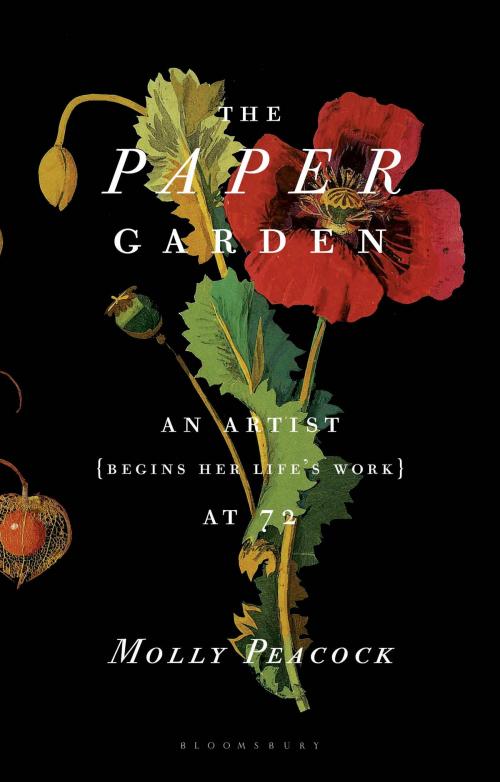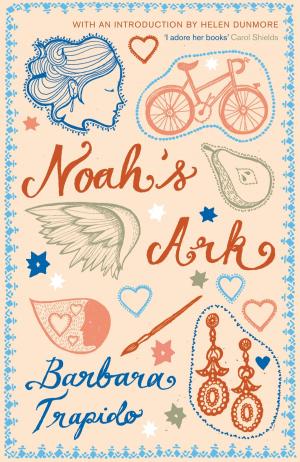The Paper Garden
An Artist Begins Her Life's Work at 72
Biography & Memoir, Artists, Architects & Photographers, Nonfiction, Art & Architecture, Historical| Author: | Molly Peacock | ISBN: | 9781608196982 |
| Publisher: | Bloomsbury Publishing | Publication: | March 29, 2011 |
| Imprint: | Bloomsbury USA | Language: | English |
| Author: | Molly Peacock |
| ISBN: | 9781608196982 |
| Publisher: | Bloomsbury Publishing |
| Publication: | March 29, 2011 |
| Imprint: | Bloomsbury USA |
| Language: | English |
Mary Delany was seventy-two years old when she noticed a petal drop from a geranium. In a flash of inspiration, she picked up her scissors and cut out a paper replica of the petal, inventing the art of collage. It was the summer of 1772, in England. During the next ten years she completed nearly a thousand cut-paper botanicals (which she called mosaicks) so accurate that botanists still refer to them. Poet-biographer Molly Peacock uses close-ups of these brilliant collages in The Paper Garden to track the extraordinary life of Delany, friend of Swift, Handel, Hogarth, and even Queen Charlotte and King George III.
How did this remarkable role model for late blooming manage it? After a disastrous teenage marriage to a drunken sixty-one-year-old squire, she took control of her own life, pursuing creative projects, spurning suitors, and gaining friends. At forty-three, she married Jonathan Swift's friend Dr. Patrick Delany, and lived in Ireland in a true expression of midlife love. But after twenty-five years and a terrible lawsuit, her husband died. Sent into a netherland of mourning, Mrs. Delany was rescued by her friend, the fabulously wealthy Duchess of Portland. The Duchess introduced Delany to the botanical adventurers of the day and a bonanza of exotic plants from Captain Cook's voyage, which became the inspiration for her art.
Peacock herself first saw Mrs. Delany's work more than twenty years before she wrote The Paper Garden, but "like a book you know is too old for you," she put the thought of the old woman away. She went on to marry and cherish the happiness of her own midlife, in a parallel to Mrs. Delany, and by chance rediscovered the mosaicks decades later. This encounter confronted the poet with her own aging and gave her-and her readers-a blueprint for late-life flexibility, creativity, and change.
Mary Delany was seventy-two years old when she noticed a petal drop from a geranium. In a flash of inspiration, she picked up her scissors and cut out a paper replica of the petal, inventing the art of collage. It was the summer of 1772, in England. During the next ten years she completed nearly a thousand cut-paper botanicals (which she called mosaicks) so accurate that botanists still refer to them. Poet-biographer Molly Peacock uses close-ups of these brilliant collages in The Paper Garden to track the extraordinary life of Delany, friend of Swift, Handel, Hogarth, and even Queen Charlotte and King George III.
How did this remarkable role model for late blooming manage it? After a disastrous teenage marriage to a drunken sixty-one-year-old squire, she took control of her own life, pursuing creative projects, spurning suitors, and gaining friends. At forty-three, she married Jonathan Swift's friend Dr. Patrick Delany, and lived in Ireland in a true expression of midlife love. But after twenty-five years and a terrible lawsuit, her husband died. Sent into a netherland of mourning, Mrs. Delany was rescued by her friend, the fabulously wealthy Duchess of Portland. The Duchess introduced Delany to the botanical adventurers of the day and a bonanza of exotic plants from Captain Cook's voyage, which became the inspiration for her art.
Peacock herself first saw Mrs. Delany's work more than twenty years before she wrote The Paper Garden, but "like a book you know is too old for you," she put the thought of the old woman away. She went on to marry and cherish the happiness of her own midlife, in a parallel to Mrs. Delany, and by chance rediscovered the mosaicks decades later. This encounter confronted the poet with her own aging and gave her-and her readers-a blueprint for late-life flexibility, creativity, and change.















